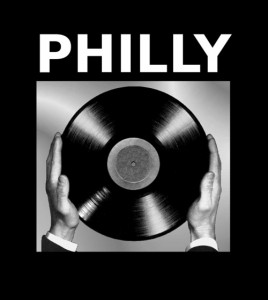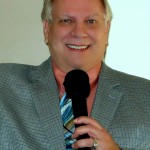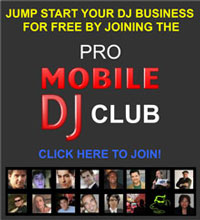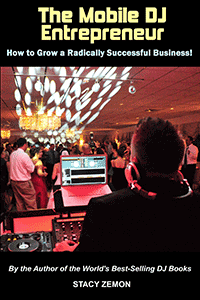by Dave Austin – “Music Professor”
 Ask someone what first comes to mind at the mention of Philadelphia and you may hear about the Declaration of Independence, the Liberty Bell or the Phillies.
Ask someone what first comes to mind at the mention of Philadelphia and you may hear about the Declaration of Independence, the Liberty Bell or the Phillies.
But, Philadelphia, Pennsylvania, is also home to a well-documented musical heritage dating back to colonial times. Innovations in classical, opera, jazz, R&B and soul have earned the city a special place in musical lore.
However, for this discussion, we’ll stick to popular music.
The Pioneers
In the early years of rock & roll, Philly and pop music were virtually synonymous with hits by Chubby Checker, Frankie Avalon and Bobby Rydell. Also among these pioneers was Bill Haley from nearby Chester, PA.
This led to Philly’s first major contribution to mainstream American pop music with a local after-school dance show called “American Bandstand.” A twenty-something fellow named Dick Clark hosted the show from the Channel 6 studio at 46th and Market Streets.
AB was groundbreaking in its broadcasting of R&B in the mid-50s. Clark soon became a leading music producer facilitating the rise of local record labels like Swan, Cameo-Parkway and Chancellor.
The payola scandal of the late ‘50s threatened both the show and Clark but subsequent congressional hearings cleared Clark of any wrongdoing. Nevertheless, AB moved to Los Angeles in 1963 and Philadelphia’s pop output began to decline.
R&B and Soul
Philly also had a dynamic R&B and soul scene, most notably recording on the Cameo-Parkway label, which charted many R&B dance hits including Chubby Checker’s “The Twist.”
Cameo-Parkway quickly followed with a series of dance themed novelties like “The Wah Watusi” by The Orlons, “Mashed Potato Time” by Dee Dee Sharp and “The Bristol Stomp” by The Dovells.
Another of the city’s most famous performers of the era was Danny & The Juniors, a vocal group which were among the first of Philly’s doo-wop musicians to gain national success.
Girl Groups
Let’s fast-forward some ten years as Philadelphia began to develop a unique musical identity, drawing from the “girl group sound” with strong pop melodies and brassy, upbeat production.
Major girl acts included Brenda & the Tabulations with “Dry Your Eyes,” Barbara Mason’s sultry vocals on “Yes, I’m Ready” and Claudine Clark’s raucous sound.
However, the most influential of these performers was Patty LaBelle, who continued as a major pop singer in the 1970s.
The Architects of the Philly Sound
In the 1960s, Phil-LA and Arctic Records were where legendary songwriters Kenny Gamble and Leon Huff began their careers. Gamble & Huff were the architects of the Philadelphia Sound in soul music, beginning in 1967 with the Soul Survivors’ “Expressway to Your Heart.” Their signature sound was sentimental and romantic.
Singer Jerry Butler became an increasingly important performer as Gamble and Huff experimented with lush orchestral sounds from large ensembles of strings and horns. The result was a “funky” style, more removed from R&B’s blues roots, and reminiscent of Motown in its attention to detail and hooks.
Though Gamble and Huff were the most important producers of the Philly scene, there was also Thom Bell, who worked with the Delfonics, Stylistics and Spinners.
In the early 70s, Philly soul enjoyed its most popular recordings of the era. Gamble & Huff’s Philadelphia International label started the trend after inking a distribution deal with CBS.
The O’Jays (“Back Stabbers”) became the first major act under the arrangement. There was also Harold Melvin & the Blue Notes and their lead vocalist, Teddy Pendergrass.
By the mid-70s, Philly soul began to decline in popularity as audiences embraced disco, where the city’s only major contribution was local veteran Patty LaBelle. However, this period also saw the success of the blue-eyed soul duo of Hall & Oates.
East Coast Hip-Hop
Recently, Philadelphia’s local music scene has produced a number of famous performers from various fields, including jazz, R&B, rock, hip-hop and dancehall.
The city’s most important contribution since the 1980s was the evolution of East Coast Hip-Hop, a style based out of New York City. Also, America’s second-largest population of Jamaicans has caused the spread of dancehall and reggae clubs into the city’s nightlife.
There’s a diverse DJ scene of electronic music, based mainly in an area called “Vinyl Row” along 4th Street. DJs spin house, techno and other styles, but the city is particularly known for the techstep style of drum and bass and is home to the country’s most popular DJ of the style, Damien Higgins, a.k.a. Dieselboy.
Another Good Read
We’ve barely touched on the huge library which makes up Philly music. Considering the lasting contribution the city has made in so many different genres, let me suggest some reading which will help better understand this legacy and how it still affects today’s audiences.
Feast your eyes on Philadelphia’s History of Music: Classical-Opera-Pop Music-Jazz-Rock N’ Roll by Harvey Sheldon, and Philadelphia – City of Music by James Rosin. (Both available from Amazon) There are, of course, other publications about Philly music, but these are among the best. Read, listen and enjoy that great “Philly Sound.”
Dave Austin – Music Professor
 Dave Austin began his career at age 13 at a small, hometown radio station. He went on to graduate from the University of Southern Mississippi with a Bachelor’s degree in broadcasting.
Dave Austin began his career at age 13 at a small, hometown radio station. He went on to graduate from the University of Southern Mississippi with a Bachelor’s degree in broadcasting.
Since that time, Dave has been a mobile and radio DJ, radio station Program Director, and a TV news reporter and anchorman. He has also done voiceover work for documentaries and commercials.
In 1986 Dave’s longtime passion for music prompted him to start “Southern Celebrations DJs,” a multi-system mobile entertainment company serving clients in Tennessee, Northern Georgia and Northern Alabama.
You can email him c/o [email protected] or visit his website – Moonlight Mobile Music.




